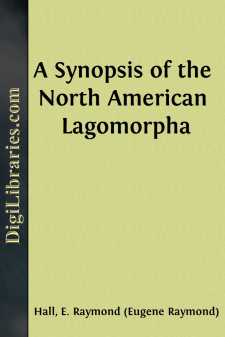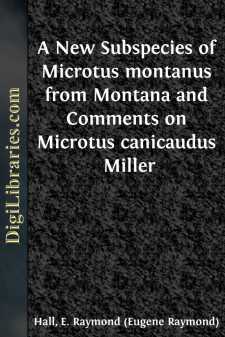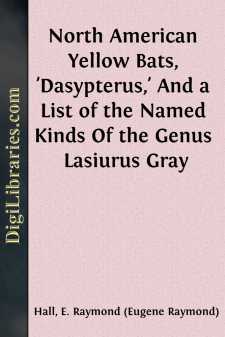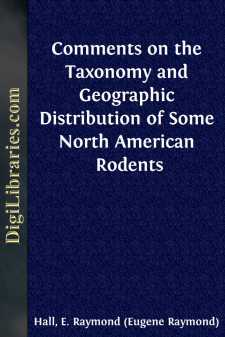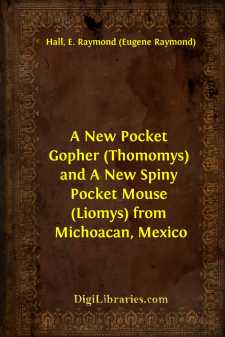Categories
- Antiques & Collectibles 13
- Architecture 36
- Art 48
- Bibles 22
- Biography & Autobiography 813
- Body, Mind & Spirit 142
- Business & Economics 28
- Children's Books 16
- Children's Fiction 13
- Computers 4
- Cooking 94
- Crafts & Hobbies 4
- Drama 346
- Education 46
- Family & Relationships 57
- Fiction 11829
- Games 19
- Gardening 17
- Health & Fitness 34
- History 1377
- House & Home 1
- Humor 147
- Juvenile Fiction 1873
- Juvenile Nonfiction 202
- Language Arts & Disciplines 88
- Law 16
- Literary Collections 686
- Literary Criticism 179
- Mathematics 13
- Medical 41
- Music 40
- Nature 179
- Non-Classifiable 1768
- Performing Arts 7
- Periodicals 1453
- Philosophy 64
- Photography 2
- Poetry 896
- Political Science 203
- Psychology 42
- Reference 154
- Religion 513
- Science 126
- Self-Help 84
- Social Science 81
- Sports & Recreation 34
- Study Aids 3
- Technology & Engineering 59
- Transportation 23
- Travel 463
- True Crime 29
A New Bat (Myotis) From Mexico
Description:
Excerpt
A single specimen of little brown bat from the northern part of the state of Veracruz seems to be of an heretofore unrecognized species. It is named and described below.
Myotis elegans new species
Holotype.—Female, adult, skin and skull, No. 88398 Museum of Natural History, The University of Kansas; 12-1/2 mi. N. Tihuatlán, 300 ft. elevation, Veracruz, Mexico; obtained on September 24, 1961, by Percy L. Clifton, original No. 985.
Geographic distribution.—Known only from the type locality.
Diagnosis.—A small-footed species having a short tail and small skull. Pelage on upper parts near (16' l) Prout's Brown (capitalized color terms after Ridgway, Color Standards and Color Nomenclature, Washington, D. C., 1912), and more golden on underparts; ears pale brownish and flight-membranes only slightly darker; thumb small (7.5 mm. including wrist); tragus slender but deeply notched. Longitudinal, dorsal profile of skull relatively straight but frontal region elevated from rostrum and lambdoidal region elevated from posterior part of parietal region; posterior margin of P4 (in occlusal view) notched.
Comparisons.—Among named kinds of Myotis, M. elegans shows most resemblance to the species M. californicus and M. subulatus. Differences from the latter include shorter tail and ear, more golden color on underparts, pale (not blackish) lips, ears and flight membranes, more slender tragus, shorter skull, posterior border of P4 (in occlusal view) more deeply notched, and longitudinal dorsal profile of skull higher in frontal and lambdoidal regions.
Differences from M. californicus include shorter tail, more golden color on underparts, deeper notch in tragus, shorter skull, notched instead of smooth posterior border of P4 (in occlusal view), longitudinal, dorsal profile of skull less abruptly elevated in frontal region and with (instead of without) prelambdoidal depression. From M. c. mexicanus that occurs to the north, west, and south of the type locality of M. elegans the latter further differs in darker color, paler ears, paler flight membranes, and lesser size, including skull.
Differences from M. nigricans of the same region include reddish instead of black pelage, smaller hind foot, smaller skull, rostrum smaller in relation to remainder of skull, narrower interorbital region, and absence of a sagittal crest.
Measurements.—Total length, 79; length of tail, 34; length of hind foot, 7.5; length of ear from notch, 12; length of tragus, 6.5; weight, 4 grams; length of forearm, 33.0; greatest length of skull, 12.4; condylobasal length, 11.9; interorbital constriction, 3.2; breadth of braincase, 6.1; occipital depth, 4.5; length of mandible, 8.9; length of maxillary tooth-row, 4.6; maxillary breadth at M3, 4.9; length of mandibular tooth-row, 5.0. Degree of wear on teeth, stage 2 (in terminology of Miller and Allen, Bull. U. S. Nat. Mus., 144, May 25, 1928).
Fig. 1. Lateral view (left) and dorsal view (right) of the holotype of Myotis elegans, × 2.Remarks.—The longitudinal dorsal profile of the skull and the deeply notched posterior border of P4 seem to be distinctive of elegans. When the characters of elegans first were tabulated it was felt that it probably was only subspecifically different from some previously named species....



